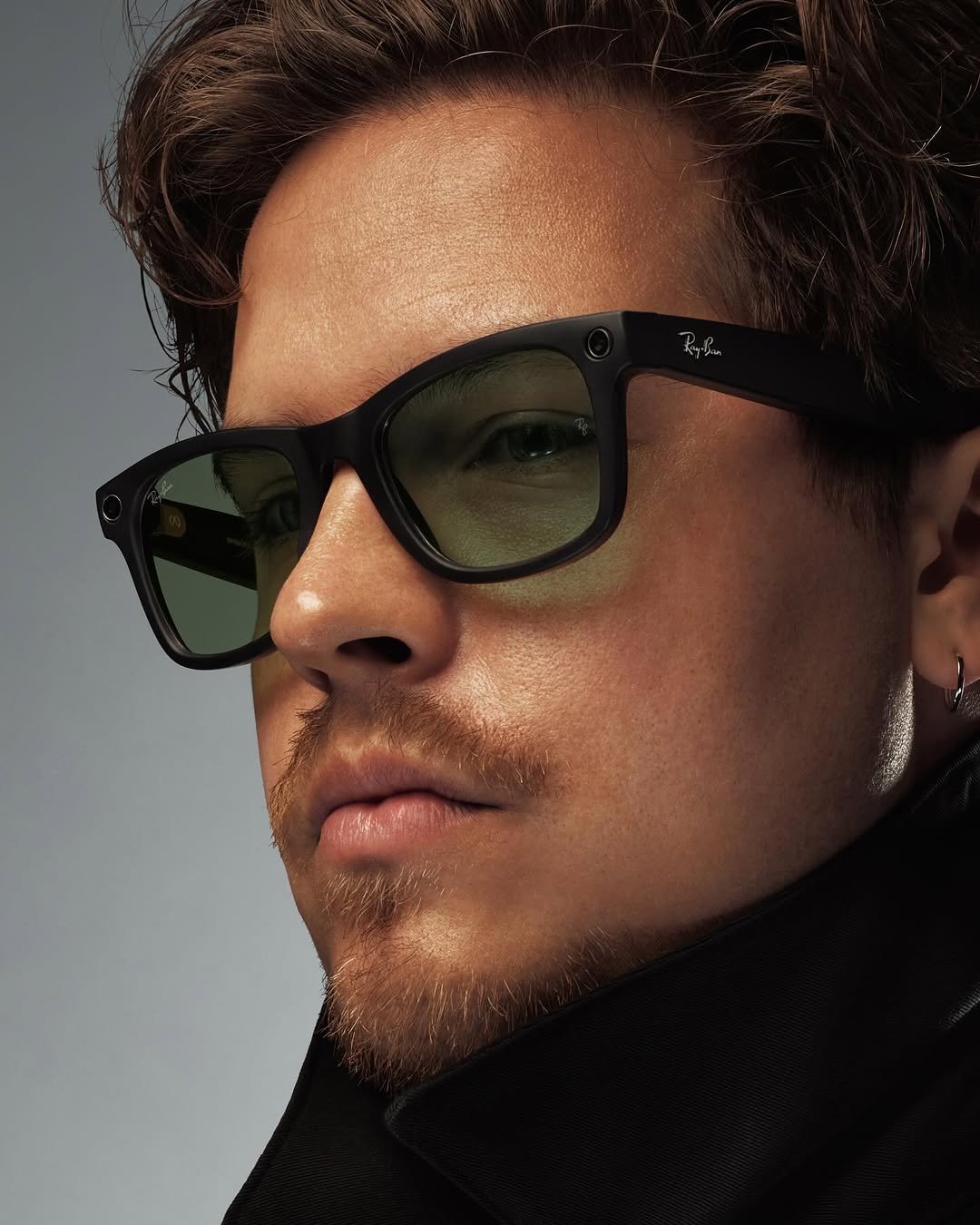The Smart-Glasses Showdown: Rivals Closing in on Meta’s Lead
A New Platform Battle Begins
The wearable tech arena is heating up as smart glasses emerge as the potential successor to the smartphone. Meta Platforms—through its Ray-Ban collaboration—currently leads the pack, but multiple major players are mounting real challenges. As an industry researcher put it: “2025, 2026, even 2027 will be the years of inflection in the growth trajectory for smart glasses.”
The stakes are high: whoever controls the next generation of eyewear doesn’t just sell hardware—they secure a new computing platform, a vast data ecosystem and access to daily-life interfaces.
Meta: Setting the Benchmark
Meta has built its initial lead through a strategic partnership with Ray‑Ban owner EssilorLuxottica, marrying classic eyewear design with modern tech. The Ray-Ban Meta glasses feature dual-cameras, open-ear speakers and voice assistant integration.
In June 2025 they announced a further collaboration with sports-brand Oakley—the “Oakley Meta HSTN” model adds a high-resolution camera, water resistance and Meta AI capabilities. Reuters
The advantage for Meta: scale, brand heritage, ecosystem control and massive early market-share. According to industry data, Meta held around 66% of the smart-glasses market in 2024.
But the question is: can others catch up before Meta locks in dominance?

Photo: @raybanmeta - Dylan Sprouse in Smart Glasses
Google & Android XR: The Platform Counterstrike
Google LLC has quietly recalibrated its wearable strategy with the introduction of its Android XR platform, a unified operating system for extended-reality devices.
At Google I/O 2025, the hardware partner Xreal unveiled “Project Aura” smart glasses running Android XR—introducing a viable alternative ecosystem to Meta’s platform control. The Times of India
While Google currently lacks a major consumer smart-glasses product, its strength lies in software, AI, app-ecosystem reach and platform scale. If its hardware partner execution improves, Google could threaten Meta’s dominance.
Samsung, Amazon & the Supply-Chain Giants
Samsung Electronics is positioning itself for the wearable wars, leveraging its strength in displays, semiconductors and manufacturing. While the firm has not yet released a mass-market glasses product, its involvement in Android XR partnerships signals readiness.
On the retail side, Amazon.com, Inc. is developing consumer AR glasses codenamed “Jayhawk,” aimed at a late-2026 or early-2027 launch. The Information reports these glasses will include cameras, speakers and full-colour display in one lens. Reuters
Amazon’s advantage: endless distribution, retail control, logistics mastery and the ability to bundle glasses into its e-commerce ecosystem. If successful, it could shift the battle from hardware alone to service integration.
China & Emerging Markets: The Fast-Moving Challengers
In the global south, companies are moving fast. Chinese tech giant Alibaba Group announced “Quark AI Glasses,” targeting end-2025 release in China. The product promises hands-free calling, real-time translation and transcription features powered by its Qwen large-language-model. Investopedia
In India, Reliance Jio unveiled “JioFrames”—AI-powered smart glasses designed for the Indian market—and directly positioned as a rival to Meta’s eyewear.
These players may not dominate in the U.S. yet, but their pricing, mobile-integration and local market-knowledge give them an edge in rapidly growing non-Western markets.
How Close Are the Rivals to Meta?
Meta remains ahead in consumer availability, retail partnerships and market share. But the competitive gaps are narrowing.
Download-ready ecosystem hardware is coming from Google, Amazon and Apple (rumoured). Platform strategies and partnerships are in motion. Component-costs are falling, user acceptance is improving and real-world apps (translation, hearing-assist, livestreaming) are gaining traction.
Analyst Jitesh Ubrani of IDC remarked:
“We’re heading in the right direction… 2025, 2026… will be the years of inflection in the growth trajectory for smart glasses.” Los Angeles Times+1
For CEOs and strategic technologists, this means the next leap in computing may shift from phones to frames. Ownership of the hardware-plus-software stack becomes critical.
Why This Battle Matters for Business Leaders
-
Wearables as the next platform: Eyewear can provide always-on interfaces, voice/gesture control, context-aware AI—redefining personal computing.
-
Ecosystem control is key: Companies that control hardware, software, platforms and services gain the lion’s share of value—Meta has a head-start, but it’s not insurmountable.
-
Design, cost and user-acceptance matter: Past failures (e.g., Google Glass) were thwarted by bulky designs and social resistance. The new devices must look like normal glasses.
-
Global strategy and localised competitors: Chinese and Indian firms are moving quickly, often with mobile integration and competitive pricing. The global race isn’t just about the U.S. market.
For C-suite executives, whether in tech, retail or services, this battle offers lessons: anticipate platform shifts, consider control of downstream services, and prepare for the next wearables wave.
Outlook: Who Will Lead and Why?
Meta currently leads and is expanding aggressively (Oakley collaboration, Ray-Ban Display launch). But Google’s platform streaming in, Amazon’s retail muscle is looming and regional challengers are agile.
According to market data, global smart-glasses shipments are projected to grow from millions in 2024 to tens of millions by 2029.
The winner won’t just build glasses, they’ll build a lifestyle ecosystem, service layer and preferred interface for the next decade of computing.
For now, Meta sits on the throne. The challengers are gathering around the table.
Smart-Glasses FAQ: The Race to Beat Meta
Q1: Who currently leads the smart-glasses market?
A1: As of 2025, Meta Platforms leads the global market with its Ray-Ban Meta smart glasses, accounting for more than 65% of total shipments according to IDC. Their blend of style, AI integration, and social-media connectivity has given Meta a clear first-mover advantage.
Q2: Which companies are Meta’s biggest rivals?
A2: Major challengers include Google, Samsung, and Amazon, alongside emerging players like Alibaba, Xiaomi, and Reliance Jio. Each brings unique advantages—Google’s Android XR platform, Samsung’s hardware scale, Amazon’s retail ecosystem, and Asia’s rapid innovation cycles.
Q3: How close are these rivals to Meta in technology?
A3: Google and Samsung are closing the gap through partnerships with eyewear brands like Warby Parker and Gentle Monster. Amazon’s “Jayhawk” glasses are in late development, while Alibaba and Xiaomi already offer AI-enabled smart glasses with translation and commerce features.
Q4: When will consumers see the next generation of smart glasses?
A4: Meta’s next model, codenamed Hypernova, is expected in late 2025 or early 2026, with a full AR display. Google and Amazon are targeting similar timelines, suggesting a major leap in wearable computing within the next 12–18 months.













